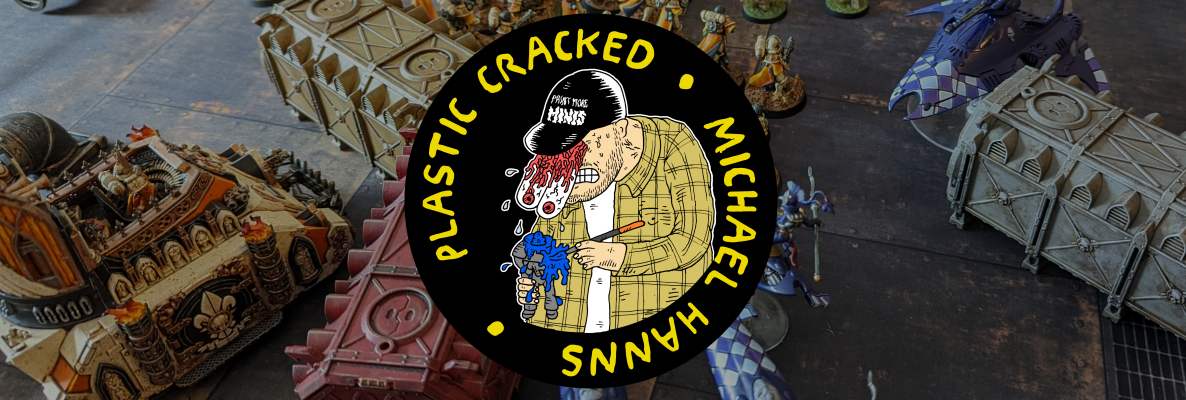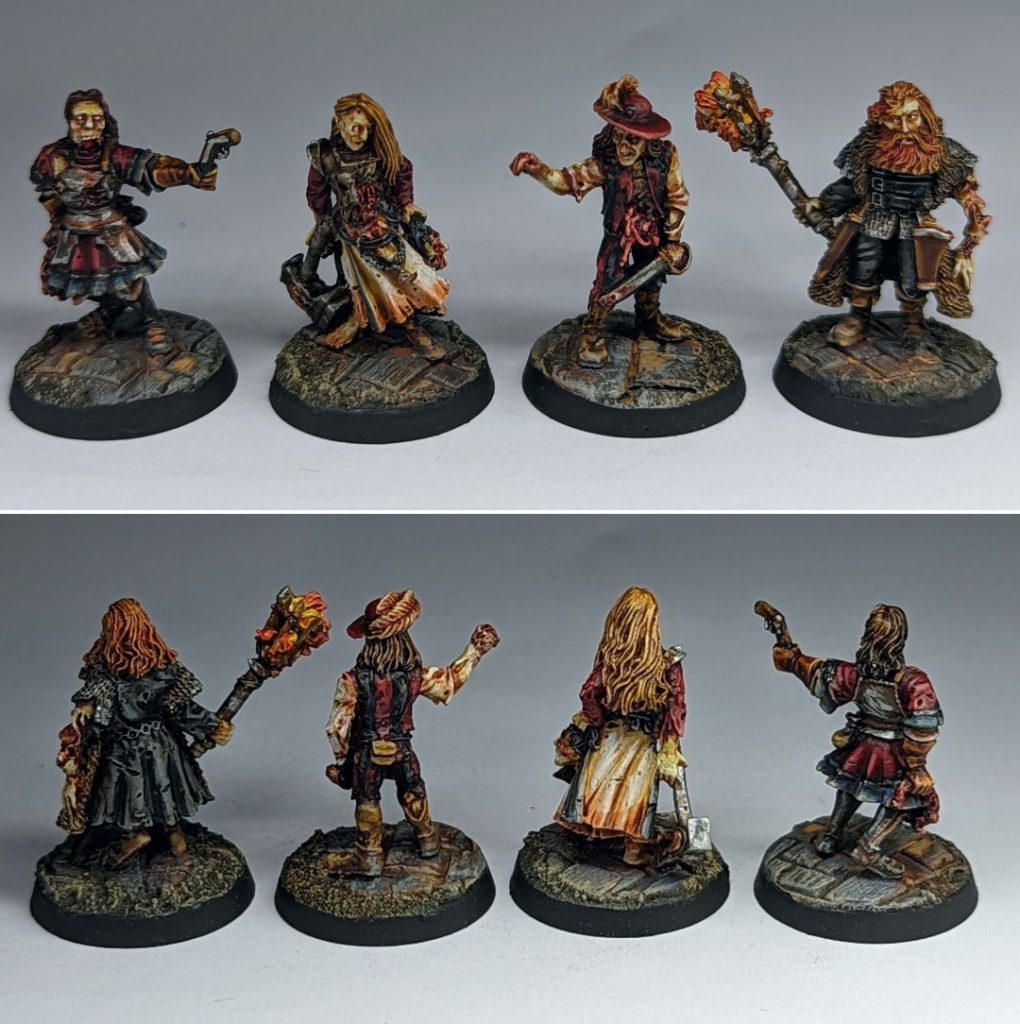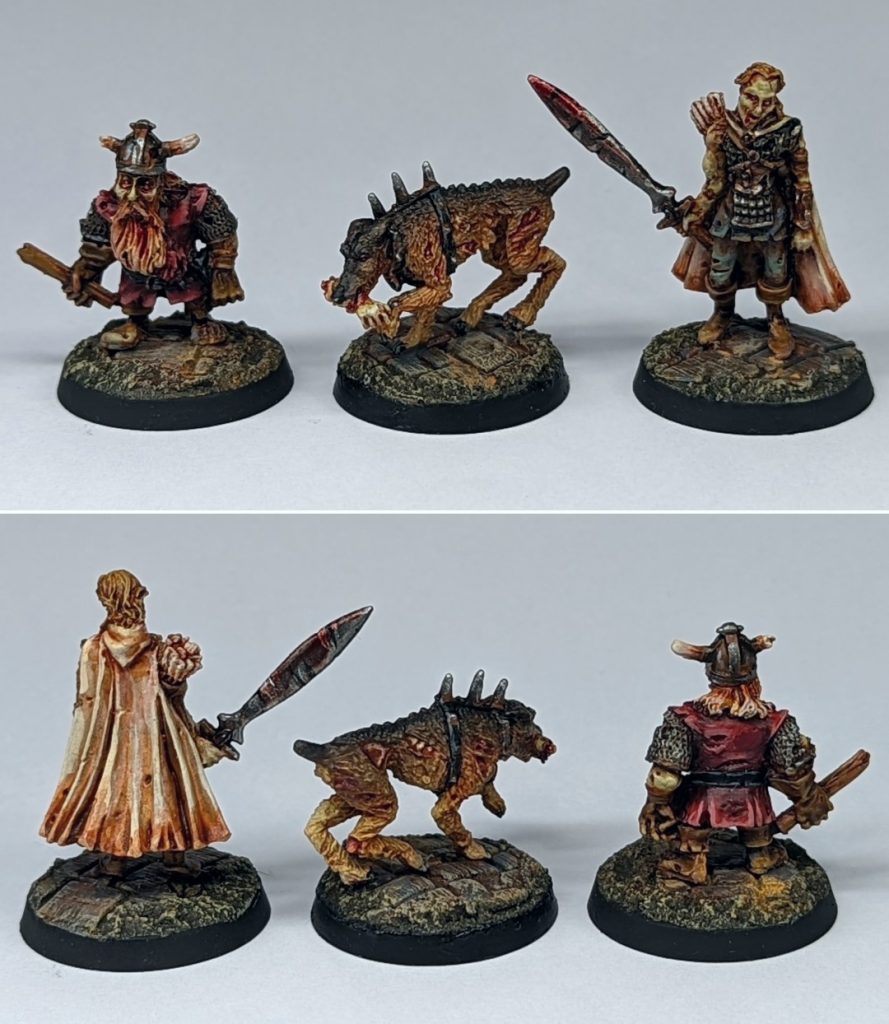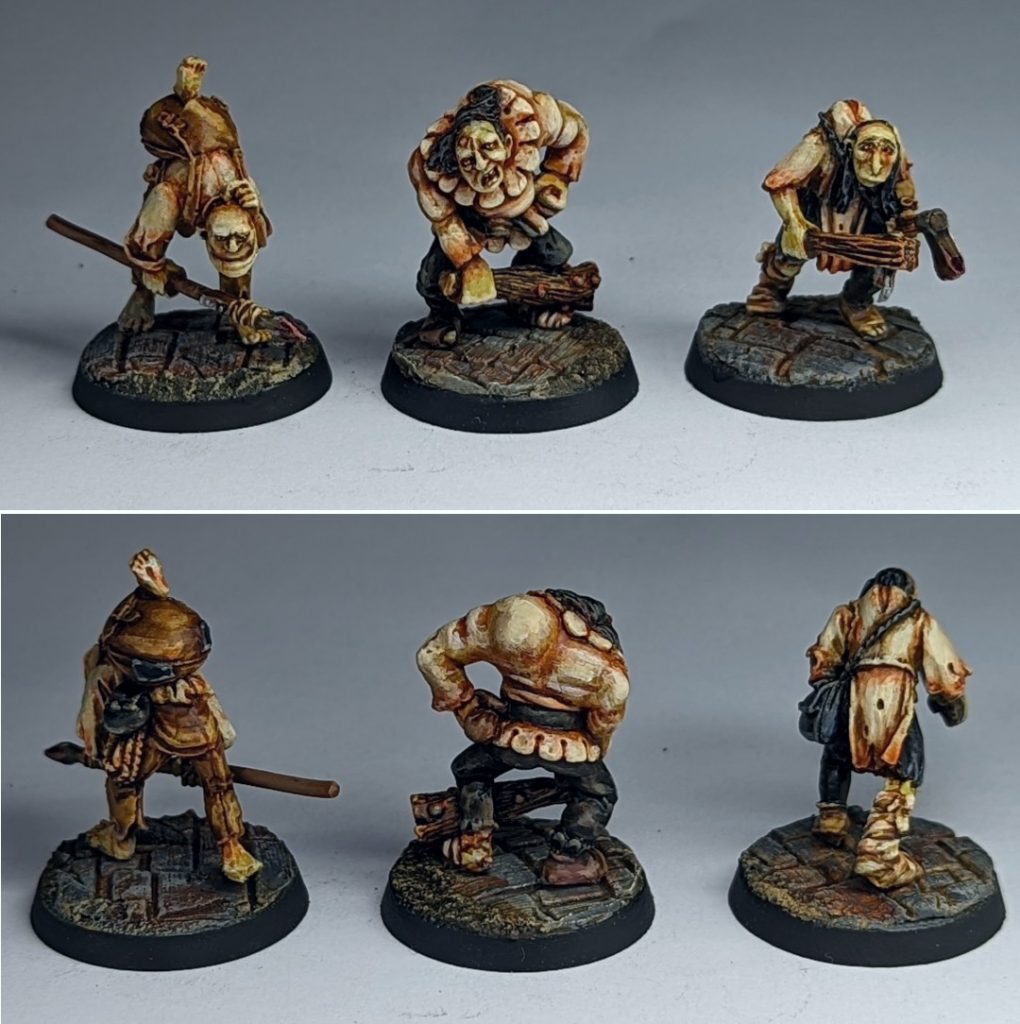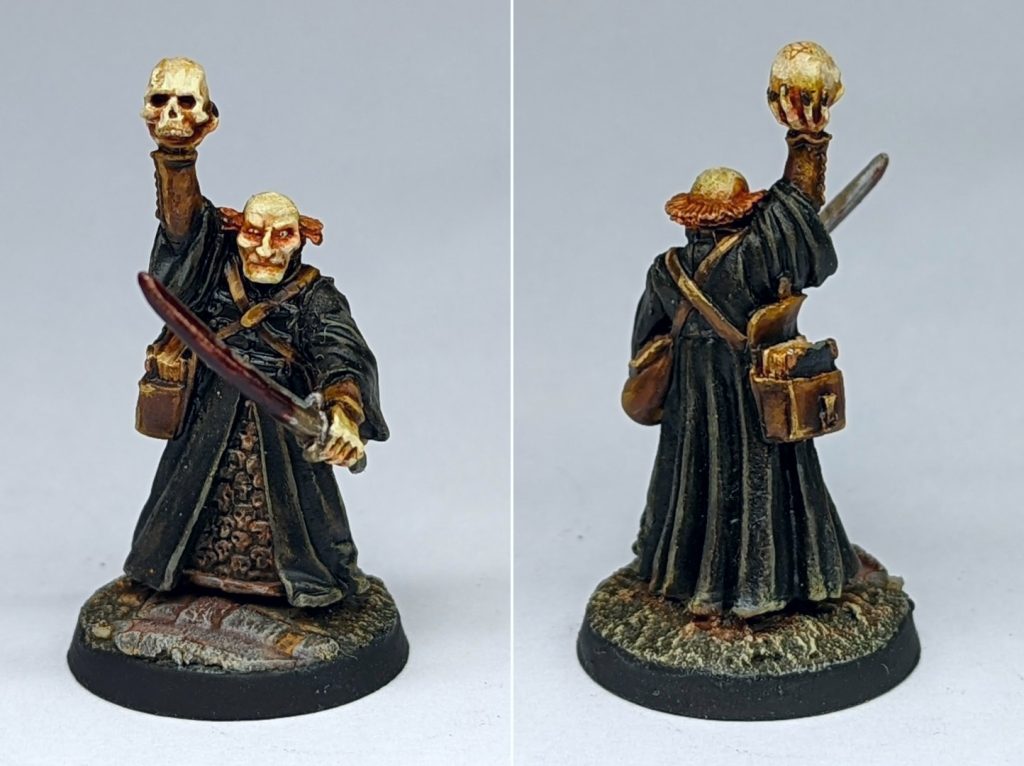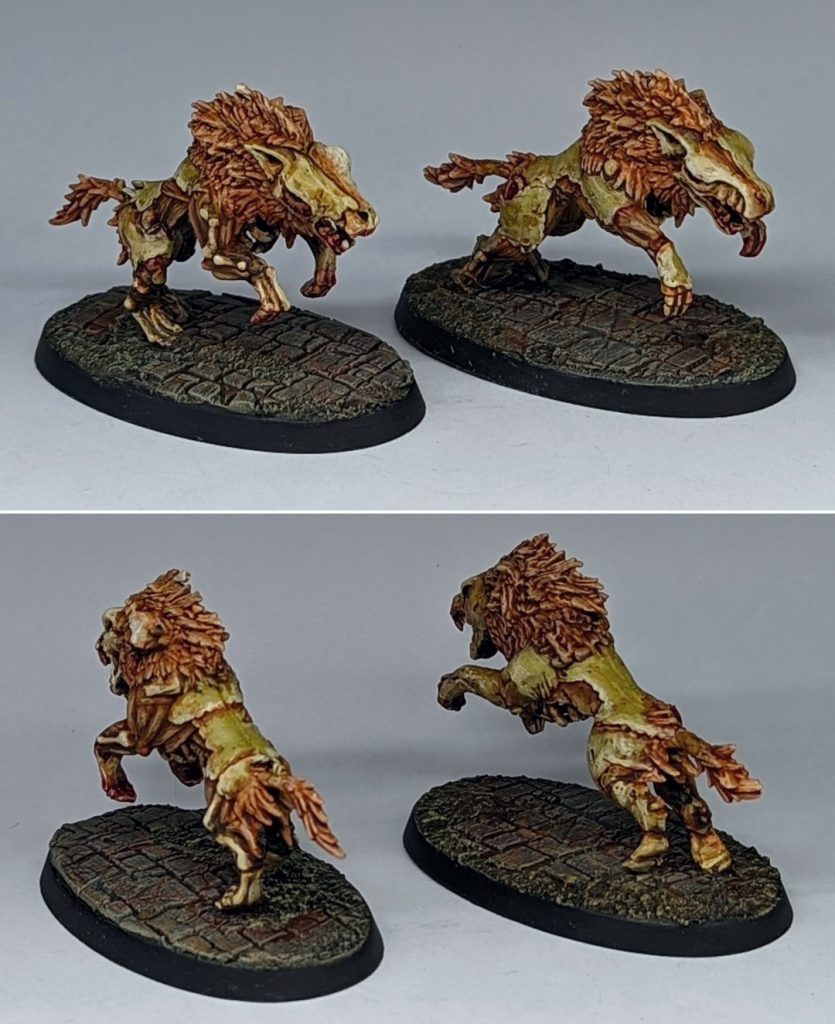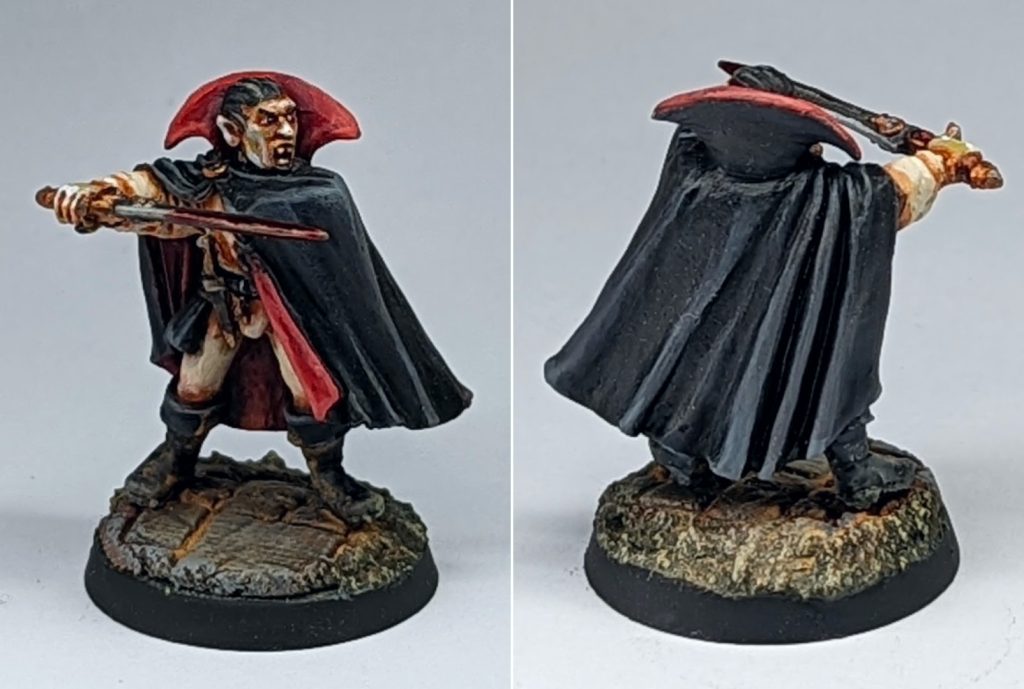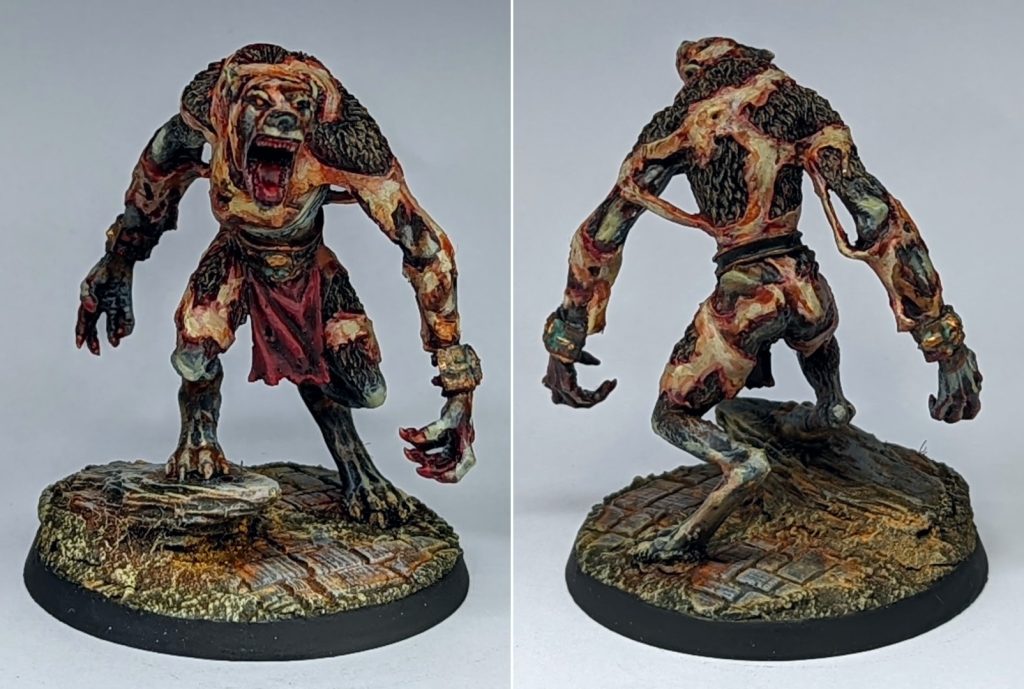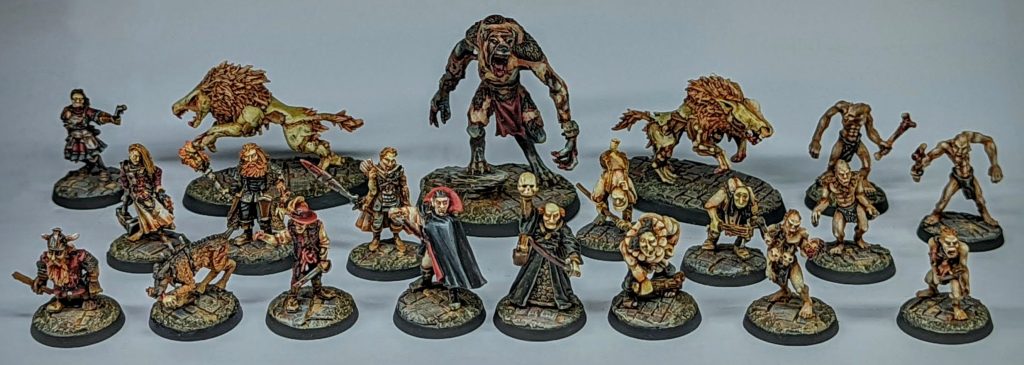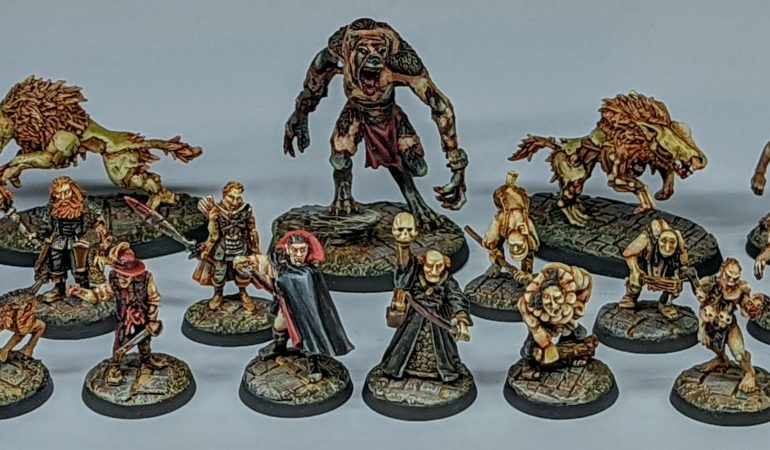
It’s been a hot minute since we last set foot in The City of the Damned, but I’m back with a brand new warband to showcase.
Due to a combination of COVID, local uptake and my own availability, it’s taken a little longer than I’d have liked – but I’m finally getting somewhat regular games of Mordheim. My Clan Eshin warband (The Squeaky Blinders) have advanced their warband rating beyond 200 and many a wyrdstone has been pillaged and sold. And you know what? It’s been great. Honestly, I haven’t had this much fun playing Warhammer since I first discovered the Horus Heresy.
Naturally, getting games of Mordheim has led to me thinking about Mordheim a lot more in my day to day life. Thinking about warbands, scenery, things I could do to improve my home set up, things I could build to bring with me to my local club. This would, eventually, lead to me thinking about the Undead warband I had tucked away in an old Games Workshop figure case from back in the early ’00s1.
See, back when I first started getting miniature painting again, I had the foresight to hunt through what was left of my old Warhammer collection from back in the day. A lot of what remained was junk, but there was a fair amount of pretty usable stuff in there as well. There was an all-metal Biel Tan army (which I sold to a friend who plays Eldar), my old Dwarfs army (in a wildly variable but largely serviceable condition), some old school Necromunda bits and pieces and an Undead warband for Mordheim – unboxed, but otherwise as new.
Presently, I find myself between projects. For whatever reason, I’m still really not feeling working on my Rohan army or the last bits and pieces I need for a Heresy event in December. As I’m currently knee-deep in a mini Mordheim campaign with a pal from my local club, the timing has never been better to make a second warband. As much as I love playing with The Squeaky Blinders, with just two warbands in the campaign there’s very little incentive not to tailor your Skill choices to your opponent. You’ll get insane mileage out of Dodge (a 5+ save against shooting) if you’re always facing down Reiklanders, for example, whereas you might think twice about this if Undead were in the rotation as well. On top of that, more warbands in the mix is just better for the long term health of a campaign. In a two warband campaign, one warbands success usually comes at the expense of the other – making it far easier to create wide gaps in warband rating. Giving each player another warband to play with does a decent job of approximating2 more players in the campaign, giving each player more play styles to contend with as well as a safety net should one of their warbands fall on hard times.
Yes, it was time to crack out those old Undead miniatures and make myself another Mordheim warband.
Probably the single biggest distinguishing factor of this warband over my Squeaky Blinders is that there has been next to no conversion work on these models. While my Skaven were mostly Warhammer Underworlds models with a little conversion work done, the vast majority of this warband comes from single piece pewter models from Mordheim range in the early ’00s, supplemented by a couple metal minis from the same period and a few slightly newer (but still out of production) minis for reasons I’ll get into shortly.
The first models that I decided to paint for this warband were the Zombies from the Undead warband set.
It’s fitting that I chose to start with these miniatures, because by and large they are the reason that I went ahead with this warband in the first place. It’s hard to believe that these are hand-sculpted miniatures from over 20 years ago – the detail, nuance and proportions of these minis are as good as if not better than a lot of the fancy CAD designed miniatures produced by Games Workshop today. There’s so many fine details like spilling intestines, chains or filigreed trim on the armour, while even tricky details like the fingers look no worse than the Traitor Guard that I painted for 2018’s Blackstone Fortress.
Technical quality aside, my favourite thing about these miniatures however is that they are so undeniably Mordheim in character. There’s a Reiklander, an Averlander, a Witch Hunter and a Sister of Sigmar here – and they’re all so instantly recognisable and characterful. The zombification3 here is brilliant as well, with everything from spilled guts and intestines to missing jaws, missing fragments of skull and rotting arms. I love them.
From a painting standpoint, these four really typify the approach that I went for on the rest of this warband. While I went for a more grimy, pallid approach to Blanchitsu on my Squeaky Blinders warband, this time I really pushed the warm reds and oranges of the Mordheim box art. I tried to get Heavy Red as the garment colour of choice wherever possible, filling in the rest of the minis with blacks, browns and the occasional Elfic Flesh – washed heavily with Seraphim Sepia and pin washed with Fuegan Orange. Probably the biggest challenge on all four of these miniatures was painting the blue trim on the Averlanders tunic – too saturated and it stuck out like a sore thumb, but too dark and it looked flat. It took some figuring out, but eventually I got there; I’d start from a middling tone like Ultramarine Blue, then built up some depth to the colour by highlighting it by mixing in a bit of Dead Flesh to Ultramarine Blue and washing it with Seraphim Sepia. The end result here is a muted, muddy, palid blue that has enough depth without sticking out too much from the dark and muted reds. At a distance, it maybe looks a bit like the trim is just black or dark grey, but closer inspection reveals the intent of colour – which I think is pretty cool.
I wanted the eyes of the Zombies to look different from the eyes on all of my living miniatures, so instead of painting them white with a black pupil, I instead base coated them in Heavy Red then painted a dot of white in the centre. This gives them an eerie, bloodshot but soulless and empty look.
For the basing of the warband, I decided to go with my handy Green Stuff World Flagstone roller, flattening out nice thin blobs of Milliput Superfine and filling in the gaps with AK Interactive Dark Earth. The warm basing approach I went for on my Skaven clashed a bit with how I painted my Undead warband, so I opted for a more ‘realistic’ looking approach of Mechanicus Standard Grey and Charred Brown dirt this time, drybrushed with Stonewall Grey on the flagstones and Dead Flesh on the dirt. After drybrushing, I washed the whole base with AK Interactive Streaking Grime and wiped most of it off with mineral spirits, resulting in a grimy, dingy looking stone and dirt base. As a final touch, I applied a little Fuegan Orange wash and Vallejo Rust Pigment between the tiles in places to add a flash of warmth to the otherwise grey bases.
While painting my initial batch of Zombies, I soon learned (thanks to magnificent websites Stuff of Legends and Collecting Citadel Miniatures) that Games Workshop actually supplemented this range of Zombies with three more miniatures – an Elf, a Dwarf and even a zombified Witch Hunter Hound. These took a little bit of patience to track down, but it wasn’t long before I managed to add them to my warband.
Painting wise, the Dwarf was pretty much the same as my other miniatures, but the Hound and the Elf provided a somewhat different experience. For the Hound, I base coated the miniature in Dead Flesh, and then applied a few washes over the fur in successive, receding layers. First it was a thinned downed Fuegan Orange wash all over, then a Seraphim Sepia wash everywhere but the underbelly. Next, a thick stripe of Agrax Earthshade across the back and finally a thin stripe of Nuln Oil from the top of the tail to the nose. This resulted in a nice little gradient effect on the fur, leaving nice light underbelly and a dark back. Once this was done, it was a trivial job to pick out all of the exposed/rotten flesh with Rosy Flesh and wash with Fuegan Orange, the harness in black, metallic spikes and teeth in Elfic Flesh. Quick and easy.
I’ve seen plenty of cool looking High Elves in red, but something about the miniature really made me want to try it out in the classic white and blue. I tried to apply the lessons that I’d learned painting the Averlanders trim on this model again. I found I had less trouble this time making the colour read as blue, largely due to the flatter, smoother expanses on his legs and tunic – so I applied the same Fuegan Orange pin washes as on the white cloaks to add a little more warmth back to the model. The main unifying colour here was the dirty white cloak, which I painted to match the Reiklanders Sleeves or Sister of Sigmar’s tabard. It also helps tie the Zombies in with my Dregs pretty nicely.
The Dregs an an awkward but essential part of a Vampire Counts warband – pretty much worthless in a scrap, but you’ll want to hire all three if you plan on earning any gold between games. What makes them even more awkward is that they’re a 0-3 choice, but there’s only really two sculpts for these models. You could double up on one of them and maybe swap the single optional arm around, but then you’ve got two Dregs that look more similar than the other and that sort of thing makes my brain itch. Fortunately, Games Workshop recognised this and remedied it in 2003 by resurrecting an even older miniature from the Citadel Miniatures catalogue – Luthor the Hunchback.
Luthor, pictured centre above, was a Hunchback miniature originally included in the Warhammer Quest expansion Catacombs of Terror. Seeing a niche that needed filled, Games Workshop USA started including him in the Mordheim Undead sections of their mail order catalogs alongside the other two Dregs. It was a pretty inspired decision, all things considered – the aesthetic of Luthor perfectly matches that of the other two Dregs, something which only becomes more apparent when the model is painted to match.
To distinguish the Dregs from the Zombies – and to emphasise the fact these are the closest thing the warband has to diplomats and businessmen – I opted to stick to more neutral tones on these guys, featuring way more brown and black leathers and white shirts. They’re still wretched grave robbers that hang out with Vampires and Necromancers, however, so while they received white eyes with pupils, they were still given the same Dead Flesh pallid green skin treatment as the rest of the warband. I really like these guys, they’re grim and miserable and so perfectly Mordheim.
Speaking of…
Alongside the Zombies, this has got to be my favourite sculpt from that Undead Warband set. There’s something wonderfully understated about this Necromancer, yet simultaneously deeply unsettling. It’s all in that deeply characterful, heroically proportioned face. He’s got this grim expression on his lips and the uneven squint of his eyes just come off as unhinged in the best possible way.
Same colour palette as the zombies, really – albeit with a lot more of the black, highlighted with a mix of Black and a little bit of Dead Flesh to help carry some of that pallid, greenish tinge over onto the neutral colours. His face was probably the most enjoyable area to paint overall, glazing Fuegan Orange into his eyesocket until they looked sufficiently shadowed. Again, he had some pupils added because he’s not undead like the Zombies. It doesn’t show well in the above photos, but I also flicked some Seraphim Sepia off of a toothbrush onto his bald head to create the suggestion of liver spots.
Back to the core troops, we have a block of five Ghouls. I’d originally hoped to make six of these, using each of the Mordheim Ghoul models for maximum authenticity, but I finally hit my limitation here of what I could find on eBay. Instead, I settled for three of the six, supplemented by a further two Ghouls from Warhammer Fantasy of the same era (the two taller, uglier models in the back). These are still era-appropriate models for an old school Mordheim warband – even appearing in the rulebook itself – but the collector nerd in me knows. Hopefully one day the missing three will pop up on eBay and I’ll be able to upgrade this group of five into two groups of four.
These guys were a lot of fun to paint. I always enjoy painting flesh, and these guys have it in abundance. The process was pretty simple – Dead Flesh as a base coat, Fuegan Orange wash, followed by a few thin layers of Dead Flesh and Elfic Flesh to build back up depth. This results in a warm, angry looking skin that – in my opinion – looks like it came right out the Mordheim box art.
There were a few additional details from here, all of which were fairly trivial. The blacks were the same as on the Necromancer before them, the fur was basecoated in Leather Brown then washed with Fuegan orange and the human parts were painted in the same way as the ghouls, only washed with Reikland Fleshshade again to give them more of a pink hue so that they stand out. As a final touch, I mixed some Black into Blood for the Blood God to paint some dried blood onto their makeshift shivs and bone clubs to add an additional menacing element.
The last of my core troops – a pair of Dire Wolves. I’ll be honest, of all the models in the warband, I think these are the two I’m least happy with. I had a real vision for this pair – I’d use the older plastic Dire Wolves miniatures and I’d paint them in a desaturated pallid skin with warm orange fur to evoke the vibes of a John Blanche sketch. Something about the style of these miniatures and those tones just really resonated with me, and I was so sure they’d turn out awesome. In practice, it kind of just made my Dire Wolves look a bit like lions.
I’m not unhappy on the whole with how the paint jobs turned out in isolation, but the colour choices and the bushy manes just scream ‘lion’ to me, and I’m not super happy with it. I don’t think they work great the context of the warband as a whole either. They don’t stick out like a sore thumb, but they’re not quite a perfect fit either. Perhaps I’d have been better just painting a couple of Fenrisian Wolves black instead. Ah well, not every idea is going to be a winner – and that’s okay.
At long last, we have my Vampire. Being the biggest, baddest and most important member of my warband, I thought long and hard about whether I wanted to convert a Vampire miniature or stick with the one from the warband box that I had. I’d gone through the ringer looking at Vampires of all flavours, old and new before eventually settling on just using the one that I had. He’s not the most intimidating Vampire miniature of all time, but I think that’s kind of the point. The Vampires in Mordheim don’t exactly start out with the stat line of a Vampire Lord – canonically, they’re all pretty lowly Von Carstein Vampire Thralls, sent out to do the dirty work of fetching Wyrdstone by their more powerful masters. Rule of cool is king, of course, but I’m not going to drag this miniature over the coals for not being laden head to toe in spiky, magical full plate – that’s not what this model is meant to represent, after all.
On the whole, I do really like this miniature – it’s such a great representation of a classic Bram Stoker-esque Vampire, which makes it wonderfully diverse in it’s uses. I could see using this guy as a big bad in a low level Ravenloft campaign for Dungeons & Dragons, for example. I did make one small change to him – I swapped out his (admittedly really cool) halberd in favour of an ornate High Elf longsword. As much as I liked the halberd, I just felt like him pointing the sword forward would suit his cape swooshing pose a little better. Besides that, I feel like the additional defence that Parry gives an unarmored model and the opportunity to get an extra attack with their dagger outweighs the bonus of +1 Strength.
I wanted the Vampire to look a little ‘cleaner’ than the Necromancer, so I went for a more traditional blue-grey highlighting on the black cloak (as opposed to the mix of Black and Dead Flesh I’d used on the Necromancer). The lining I painted using a basecoat of Heavy Red and highlighted by mixing in a little Rosy Flesh. The rest of the paint job was pretty much by the book – garments like on the Dregs and skin using the same method as on the Ghouls. I did try to give him some fairly stark highlighting on his jawline to give him a sharp, somewhat gaunt look. Pretty happy with how he turned out overall.
So, that was pretty much everything that I’d planned to do for the warband – until I started doing the math and discovered how surprisingly few gold crowns the warband actually amassed to. Zombies, as it turns out, are ridiculously cheap and all seven of them barely makes it past 100 gold crowns. They also count toward your warband size for calculating income (presumably for balance reasons given they don’t exactly eat), so realistically I probably don’t want to use all seven at any one point. More Ghouls is probably the sensible option here – they’re stronger, faster and can potentially become Heroes (as the only Henchmen models that are alive) – but I’m sticking to my guns for now and waiting to find more Mordheim-specific models.
Instead, I had a brainwave, which led to a rummage through some of my older figure cases – where I found a trio of now out-of-production ForgeWorld Skin Wolves. I bought these models really early on in my return to wargaming for one of my first Age of Sigmar armies, but they were so cool that I couldn’t quite bring myself to part with them when I sold the rest of the army. Instead, they’ve sat at the bottom of a figure case, patiently awaiting the day they might return to relevance. I picked out my favourite of the three, put him on a slightly smaller base and went about giving the model a bit of a glow up. It was already painted in a spooky blue-grey for the fur, so I really just spent time pushing the highlights with a little Dead Flesh mixed with Heavy Bluegrey, gave the patches of fur a little more definition with a drybrush and a wash and pushed the highlights on his little red tabard a little further. Finally, I went over the skin suit with Dead Flesh and Elfic Flesh, then shaded the edges with a thin glaze of Fuegan Orange to create the bloody, tattered effect. Overall, I think these little additions did a great job of tying the model into the aesthetic of the rest of the warband. Frustratingly, it also demonstrated to me how much better looking the Dire Wolves might’ve been if I’d just painted them black after all. Ah well.
Of course, the one catch here is that there is no Werewolf rules for Mordheim – but I plan on utilising him as an Ogre Bodyguard Hired Sword. It’s not a perfect match for a lean and speedy Werewolf, but it’s close enough. Rule of cool, man.
With the final addition of my Werewolf Hired Sword, my Mordheim Undead warband was complete!
So, that’s my second Mordheim warband. I don’t have a fancy name for these guys yet, but I’ll update this post whenever I think of one. Overall, I’m really happy with how these models turned out – the aesthetic is almost exactly what I was hoping to achieve in my head, save for maybe the two Dire Wolves. They’ll be a great second warband and I’m excited to see how they perform on the table. A lot of these miniatures will also see a secondary use in Dungeons & Dragons scenarios – my head is already abuzz with ideas for a fun Gothic Horror one shot now.
Until next time, thanks for reading and happy wargaming!
1 You know the one. Three layers of red foam with 45 figure slots per layer. Imperial Aquilla on the front. You could spot another kid on his way to his local Games Workshop a mile away if he had one of those.
2 I say approximating because 2 players with 2 warbands creates 4 different matchups, whereas 4 players with different warbands would create 7.
3 Probably not a real word.
